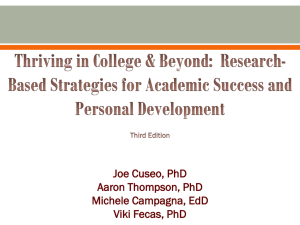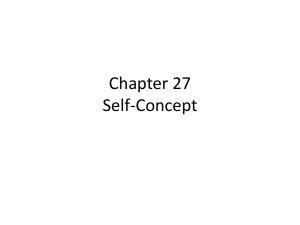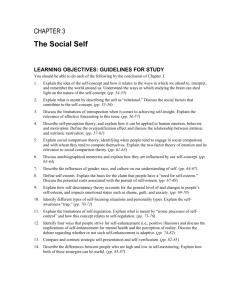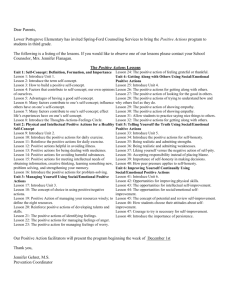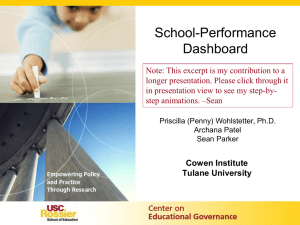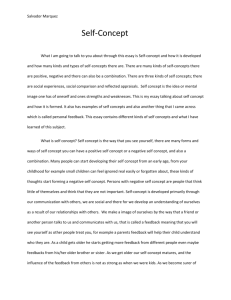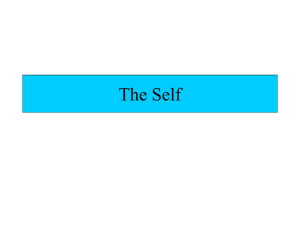the effect of student-faculty interaction on college students` academic
advertisement
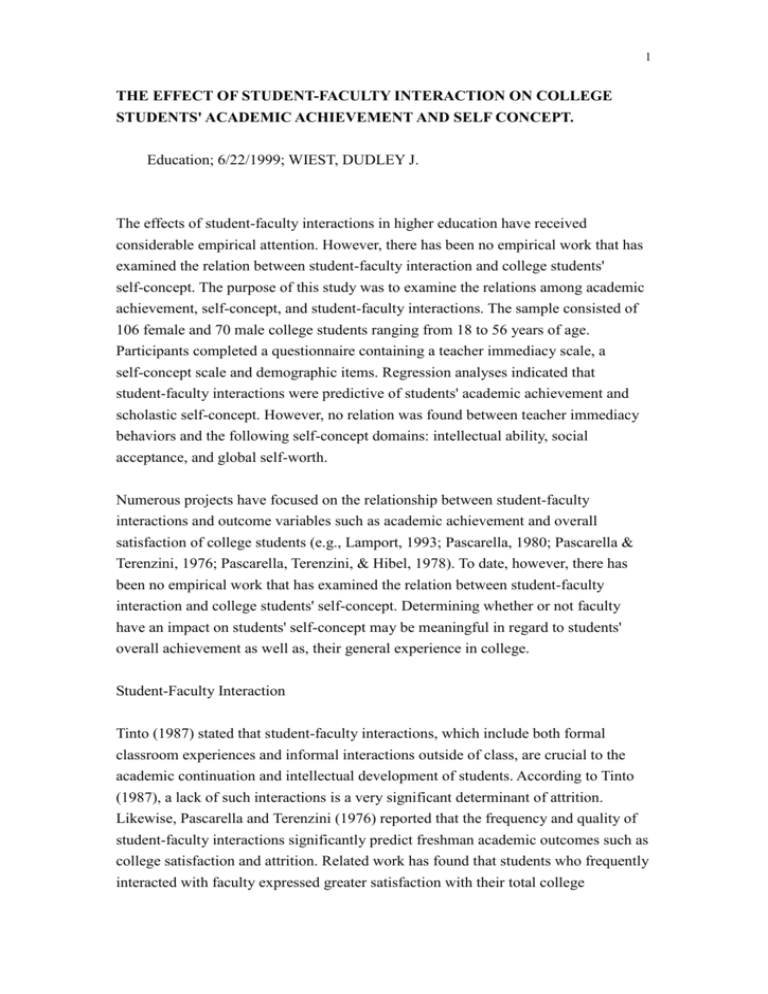
1 THE EFFECT OF STUDENT-FACULTY INTERACTION ON COLLEGE STUDENTS' ACADEMIC ACHIEVEMENT AND SELF CONCEPT. Education; 6/22/1999; WIEST, DUDLEY J. The effects of student-faculty interactions in higher education have received considerable empirical attention. However, there has been no empirical work that has examined the relation between student-faculty interaction and college students' self-concept. The purpose of this study was to examine the relations among academic achievement, self-concept, and student-faculty interactions. The sample consisted of 106 female and 70 male college students ranging from 18 to 56 years of age. Participants completed a questionnaire containing a teacher immediacy scale, a self-concept scale and demographic items. Regression analyses indicated that student-faculty interactions were predictive of students' academic achievement and scholastic self-concept. However, no relation was found between teacher immediacy behaviors and the following self-concept domains: intellectual ability, social acceptance, and global self-worth. Numerous projects have focused on the relationship between student-faculty interactions and outcome variables such as academic achievement and overall satisfaction of college students (e.g., Lamport, 1993; Pascarella, 1980; Pascarella & Terenzini, 1976; Pascarella, Terenzini, & Hibel, 1978). To date, however, there has been no empirical work that has examined the relation between student-faculty interaction and college students' self-concept. Determining whether or not faculty have an impact on students' self-concept may be meaningful in regard to students' overall achievement as well as, their general experience in college. Student-Faculty Interaction Tinto (1987) stated that student-faculty interactions, which include both formal classroom experiences and informal interactions outside of class, are crucial to the academic continuation and intellectual development of students. According to Tinto (1987), a lack of such interactions is a very significant determinant of attrition. Likewise, Pascarella and Terenzini (1976) reported that the frequency and quality of student-faculty interactions significantly predict freshman academic outcomes such as college satisfaction and attrition. Related work has found that students who frequently interacted with faculty expressed greater satisfaction with their total college 2 experience in comparison to students who interact at a lesser level (Wilson, Gaff, Dienst, Wood, & Bavry, 1975). Wilson et al. (1975) also indicate that faculty who enjoy and seek interaction with students outside of class demonstrate their accessibility for such interaction through their in-class attitudes and teaching styles. In a project that specifically examined the relation between student-faculty interaction and academic performance, Pascarella, Terenzini, and Hibel (1978) found that student-faculty interactions had a significant influence on students' academic performance as measured by students' SAT scores and freshman year cumulative GPA. Interactions focusing on intellectual or course-related matters had the strongest association with achievement (Pascarella, Terenzini, & Hibel, 1978). However, interactions dealing mostly with future careers also made a significant contribution to students' achievement. Further, they found that students who interacted more frequently with faculty, performed better academically than what was predicted from their pre-enrollment characteristics (i.e., SAT scores). On the other hand, students who seldom met with faculty tended to achieve at lower levels than predicted. Taken together, the existing research suggests that student-faculty interactions are important to a student's college experience. College Student Self-Concept Self-concept can be defined as how a person thinks about him/herself in different areas of his or her life. More specifically, academic self-concept refers to a student's perceptions of his or her academic abilities (House, 1992). A number of projects (e.g., Hamachek, 1995; House, 1993) have shown that students' self concept is significantly associated with academic achievement. Further, Loeb and Magee (1992) suggest that students with low self-esteem who find it difficult adjusting to college academics may benefit from support (e.g., faculty, peers, family) which may lead to increased satisfaction with college and enhanced self-concept. Lastly, Gerdes and Mallinckrodt (1994) recently suggested that having support and interaction with faculty may be related to students' academic achievement and self-concept. The Present Study The present study examines the relation between student-faculty interactions and students' academic achievement and self-concept. Based upon the existing research, it is hypothesized that positive student-faculty interactions will result in higher levels of academic achievement among college students. There has been no empirical work, to 3 date, which directly examines the relation between student-faculty interaction and college student self-concept. Thus, this relation will be explored in this project. Method Participants The sample consisted of 106 female and 70 male college students from a midsize university in southern California. The age range of the participants was from 18 to 56, with a mean age of 27.78 (SD = 9.77). The sample included 88 Caucasians, 42 Hispanics, 17 African Americans, 12 Asians, 8 multiracial, and nine "other." Eighty-four percent of the participants were at the junior or senior class level. Materials and Procedure Self-Perception Profile for College Students. This project employed four subscales (intellectual ability, scholastic competence, social acceptance, and global self-worth) from Neeman and Harter's (1986) domain-specific measure. A high score on a specific subscale indicates high competence in that domain; likewise, a high score on the self-worth subscale indicated positive perceptions of one self. Reliabilities for the subscales ranged from .80 to .86. Immediacy Behavior Scale. Christophel's (1990) 34-item scale includes statements which describe teacher verbal and nonverbal immediacy behaviors (e.g., smiles, gestures, uses humor). Participants are asked to rate the frequency in which they observe their teachers utilizing these immediacy behaviors. The items were scored on a five-point Likert scale ranging from 0 (never) to 4 (very often). Higher scores indicate more observed verbal and nonverbal teacher immediacy behaviors. Academic Performance. Participants were asked to provide an index of achievement by indicating their most recent midterm score in the course in which they received the survey instrument. Although students' overall grade point average would have been a more ideal measure of achievement, this information was not available. The Self-Perception Profile, Immediacy Behavior Scale, and demographic items were combined into a questionnaire which was administered during the winter quarter of the 1996-97 academic year. Participants were instructed to accurately complete the questionnaire. They were also informed that there were no "right" or "wrong" answers. 4 Participants returned completed surveys to a collection point in the peer advising center. Results In order to assess this project's hypotheses, a series of regression analyses were performed. In each regression, teacher immediacy behaviors (i.e., verbal and nonverbal) served as the independent variable. Each of the subscales from the Self-Perception Profile, as well as, students' midterm scores served as the dependent variables. Two of five regression analyses were significant. Specifically, a regression analysis indicated that teacher behaviors significantly predicted students' midterm scores, F(2, 173)= 7.838, p [is less than] .01. The standardized coefficients for verbal and nonverbal behaviors were .207 and .214, respectively; the R2 for the model was. 12. Similarly, teacher behaviors contributed significantly to students' perceptions of scholastic competence, F(2, 173) =11.802, p [is less than] .01. The standardized coefficients for verbal and nonverbal behaviors were. 160 and. 191, respectively; the R2 for the model was .083. Teacher behaviors did not contribute significantly to students' perceptions of intellectual ability, social acceptance, or self worth. Discussion Regression analyses suggest that in-class verbal and nonverbal immediacy behaviors do contribute to students' level of academic achievement, as well as, their perceptions of school related competence. Specifically, immediacy behavior was significantly associated with students' midterm scores and perceived scholastic competence. However, only a small amount of the variance in students' midterm scores and scholastic competence scores were accounted for by the teacher immediacy behaviors. As a result, it will be important in future work to consider other variables such as study habits, home environment, and stressors (i.e., work and children) which may also contribute to college students' self perceptions and academic performance. Regression analyses, on the other hand, did not support a link between teacher immediacy behaviors and students' perceptions of social acceptance, intellectual ability, and self worth. A possible explanation for this result may be that out-of-class self-concept domains such as social acceptance, intellectual ability, and overall self-worth can not be predicted by in-class instructor behavior. 5 In general, the results of this project are consistent with previous work that highlights the importance of student-faculty interaction with respect to achievement. This project also provides some evidence that student-faculty interactions are significantly associated with students' academically-related self concept. Future research should examine not only in-class student-faculty interactions, but also out-of-class interactions, as well. By examining both in and out-of-class interactions a more comprehensive understanding of how student-faculty interactions affect student performance and self perception may be possible. Moreover, future work should examine traditional and non-traditional students individually since self perceptions may differ significantly between these two groups of students (see Donohue & Wong, 1997). References Christophel, D. M. (1990). The relationships among teacher immediacy behaviors, student motivation, and learning. Communication Education, 39, 323-340. Donohue, T. L & Wong, E. H. (1997). Achievement motivation and college satisfaction in traditional and nontraditional students. Education, 118, 237-243. Gerdes, H., & Mallinckrodt, B. (1994). Emotional, social, and academic adjustment of college students: A longitudinal study of retention. Journal of Counseling & Development, 72, 281-288. Hamachek, D. (1995). Self-concept and school achievement: Interaction dynamics and a tool for assessing the self-concept component. Journal of Counseling & Development, 73, 419-425. House, J. D. (1992). The relationship between academic self-concept, achievement-related expectancies, and college attrition. Journal of College Student Development, 33, 5-10. House, J. D. (1993). Achievement-related expectancies, academic self-concept, and mathematics performance of academically underprepared adolescent students. The Journal of Genetic Psychology, 154, 61-71. Lamport, M. A. (1993). Student-faculty informal interactions and the effect on college 6 student outcomes: A review of the literature. Adolescence, 28 (112), 971-990. Loeb, R. C., & Magee, P. M. (1992). Changes in attitudes and self-perceptions during the first two years of college. Journal of College Student Development, 33, 348-355. Neemann, J., & Harter, S. (1986). Manual for the Self-Perception Profile for College Students. Denver, CO: University of Denver. Pascarella, E. T. (1980). Student-faculty informal contact and college outcomes. Review of Educational Research, 50 (4), 545-575. Pascarella, E. T., & Terenzini, P. T. (1976). Informal interaction with faculty and freshman ratings of academic and non-academic experience of college. Journal of Educational Research, 70, 35-41. Pascarella, E. T., Terenzini, P. T., & Hibel, J. (1978). Student-faculty interactional settings and their relationship to predicted academic performance. Journal of Higher Education, 49 (5), 450-463. Tinto, V. (1987). Leaving college: Rethinking the causes and cures of student attrition. Chicago: The University of Chicago Press. Wilson, R. C., Gaff, J. G., Dienst, E. R., Wood, L., Bavry, J. L. (1975). College Professors and their impact on students. New York: John Wiley and Sons. BRIANNE M. WOODSIDE, EUGENE H. WONG AND DUDLEY J. WIEST Psychology California State University, San Bernardino San Bernardino, California 92407
